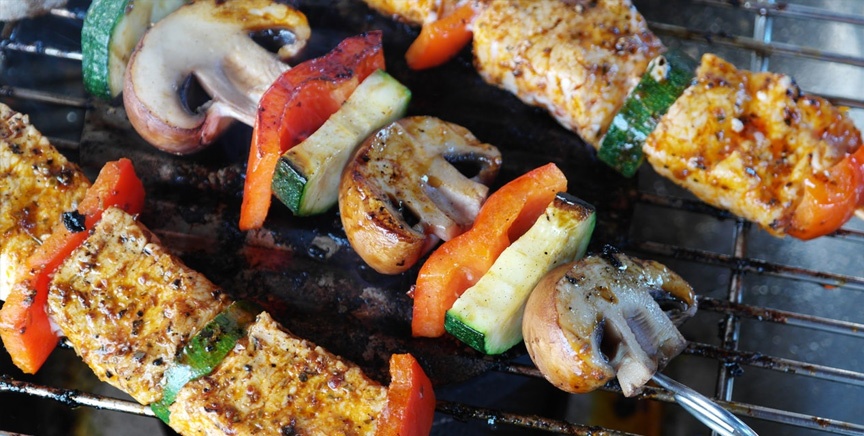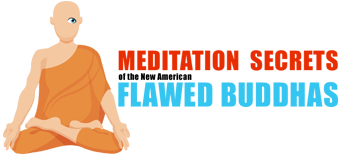Last Updated on September 25, 2020 by Paul Farrell, MRP, JD, PhD

Daily Living is Meditation… Gardening, Cooking, Working, Playing… Yes, Even Sleep and the Daily Pleasures in a Bite of Chocolate!!
“Meditate on foods… I’ll take a piece of really good chocolate and I’ll spend five minutes eating it. If you pay attention to what you’re eating, you don’t eat as much of it.”
– Dean Ornish, M.D.
“At 8:30, sleep. Most important meditation! Sleep is the common meditation for everyone, even for birds. The most important meditation. Not for nirvana, but for survival.”
– Dalai Lama
“When you are hungry, eat. When tired, sleep.”
– Zen wisdom
Yes, I know, you think this one doesn’t belong. That it may not even be meditation? That’s exactly why it is here! To keep you stretching your ideas about meditation further.
Eastern masters encourage us to live with a “beginner’s mind” – open to seeing things fresh. Westerners call it “thinking outside the box.” So try this one for size: If anything can be meditation, then perhaps anything can also become a sport, athletic activity and fitness routine.
Police Commander Meditates in his Garden
Gardening comes under this heading. A Los Angeles police commander once told me he got more out of being in his garden than going to church on Sunday. If you want to feel this spirit more, read Woods and Glover’s Gardens for the Soul, Ashmun and Mandell’s Garden Retreats, Julie Messervy’s The Inward Garden, or Elizabeth Murray’s delightful little book Cultivating Sacred Space, Gardening for the Soul. They all remind me of my sabbatical working on the Esalen farm in the Big Sur – meditating all day with nature.
Murray says “gardening can be a joyous and mindful form of meditation as you sow the seeds of relaxation and watch your pleasures grow.” Such a description of gardening may not fit the macho sport image, especially for a police commander. But then, both yoga and tai chi were long considered light-weight feminine sports by men in America, until recent years. So think outside the box, keep an open mind in what you “see” as a sport and as meditation.
Blind Ninja in Ancient Samurai War-game
Here’s another unusual meditation that demanded my total focus. While at Esalen I participated in George Leonard’s “Samurai Game” with fifty other people from around the world. Leonard is an Aikido master and author of The Ultimate Athlete and Mastery: The Keys to Success & Long-Term Fulfillment.
We were divided into two medieval Samurai armies commanded by warring shoguns. The rules were arbitrary, controlled by the gods (a role played well by Leonard’s darkside!). The battle went on for hours, with successive duels between us Samurai. After being killed, I miraculously reincarnated as a blind, one-armed Ninja… and fought the final winning duel!
Sport? Meditation? Yes, if you think outside the box, once you truly know that anything you do, anything, can become a meditation – if you focus solely on what you are doing, and nothing else.
In Mastery, Leonard says “every Zen master will tell you that building a stone wall or washing dishes is essentially no different from meditation. The quality of a Zen student’s practice is defined as much by how he or she sweeps the courtyard as by how he or she sits in meditation.”
All of Life is a Meditation, Just Do What’s in Front of You
Remember The Karate Kid film? A teenager begs a retired martial arts master to teach him how to fight. The old master reluctantly agrees, then hands the kid a bucket of paint and a brush with simple instructions: Paint the fence around the house! The kid’s disappointed, but starts painting begrudgingly. At the end of the day he’s exhausted, shows the master he finished the job.
Not done, the master tells him, more to paint! Start again tomorrow. Days go by with the kid doing endless, meaningless tasks until he’s totally frustrated, tells the master he’s had it! Good, now his training moves to a new level where he learns that all of those boring tasks were the basic skills he needed as a fighter.
“All life is a meditation, most of it unintentional,” said Joseph Campbell responding to a question from Bill Moyers in The Power of Myth. Life teaches us many lessons while we think something else is going on. And only later do we learn the value of what we learned, often by doing mundane, everyday chores reluctantly, either as unintentional or intentional meditations. The choice is yours.
Science and Engineering as Meditation
“Making coffee, brushing our teeth, driving the freeway, changing the baby’s diapers, the list of everyday opportunities for practice is endless and joyous, as long as we don’t make some distinction between sacred and profane activities” says Misha Merrill in the introduction to Zen at Work: A Zen Teacher’s 30-Year Journey in Corporate America.
The author of Zen at Work, Les Kaye, was an IBM design engineer before retiring. His work was his meditation, much in the same way that Alan Watts discusses the Japanese physicist, Dr. Kunihiko Hashida in The Way of Zen: “Every human activity can become a form of za-zen meditation … Hashida, a lifelong student of Zen and the editor of the works of Dogen, never used formal za-zen. His Zen practice was his study of physics.”
Temple Monks Rake Stone Garden…
Phychotherapist Rakes Rug At Home – Meditation In Action
In his work, Care of The Soul, Thomas Moore also tells us that “The ordinary arts we practice every day at home are of more importance to the soul than their simplicity might suggest.”
My wife taught me the truth behind Moore’s subtle insights. She is a psychotherapist with a full schedule. We had a cleaning woman, and yet many days she would slowly and quietly go around the house dusting, watering plants, raking the rug. I finally realized that these were her ways of meditating, as profound as a monk raking the stone garden in a Buddhist temple.
“Work, usually manual labor, is traditionally an important part of Zen practice,” say Blackstone & Josipovic in Zen For Beginners. “People living in monasteries clean the buildings, cultivate the grounds and wash an inordinate number of dishes as part of their daily activity.”
No Work, No Meditation, No Eat
The stress of daily life was in many ways no less intense in ancient times than now – why else their relentless focus on meditation as a way to peace! The authors note that “the man credited with establishing ‘work practice’ in the Zen schedule is Po-chang Huai-hai, an 8th century Zen master who coined the phrase, ‘a day without work is a day without food.’ … When he had grown quite old, his students became worried that he would make himself sick by working so much and contrived to hide his garden tools. No problem, the old master simply stopped eating until his tools were returned to him.”
Similarly, the Swiss psychologist Carl Jung considered his retreat on Lake Bollingen essential to peace of mind: “Talking is a torment to me, and I need many days of silence to recover from the futility of words. Without my piece of earth, my life’s work would not come into being … I have done without electricity, and tend the fireplace and stove myself. Evenings, I light the old lamps. There is no running water, and I pump the water from the well. I chop the wood and cook the food. These simple acts make man simple; and how difficult it is to be simple.”
Cooking’s Good for the Soul, Chocolate’s Great for the Heart
Every simple chore becomes an opportunity for meditation, something spiritual masters understand for centuries in both Western and Eastern cultures. They understood the simplicity in doing whatever work is in front of you at this moment: Of not “confusing spirituality with ‘thinking’ about God while you’re peeling potatoes – you just peel the potatoes.”
The 17th century French monk Brother Lawrence found his spirit as the monastery’s cook: “The time of business does not with me differ from the time of prayer, and in the noise and clatter of my kitchen, while several persons are at the same time calling for different things, I possess God in as great a tranquility as if I were upon my knees at the blessed sacrament.”
The cook has also been one of the most revered positions in the ancient and contemporary Buddhist meditation practice, as we see evident in such delightful books as Kimberly Snow’s In Buddha’s Kitchen and the classic, Instructions to the Cook, co-authored by Bernard Glassman, an aeronautical engineer who is now a Buddhist teacher and an entrepreneur who founded Greystone Family Inn, a homeless shelter, and other non-profit organizations.
Opportunities for meditation exist all around us, every moment throughout the day. Eating is perhaps the most obvious one. We read in Deepak Chopra’s Chopra Center Cookbook: “Always eat with awareness, gratitude, respect and delight.”
And America’s foremost heart specialist, Dr. Dean Ornish, meditates while slowly eating and enjoying a small piece of chocolate, something I also discovered while losing forty-eight pounds on the WeightWatchers plan.
When Tired at the End of Busy Day Dalai Lama Says “Sleep is Best Meditation”
And at the end of a good day’s work and meditating on the utter simplicity of that most ancient of all Zen sayings, “When hungry eat, when tired sleep,” rest assured that you are in the best of company, for His Holiness, the Dalai Lama says: “At 8:30, sleep. Most important meditation! Sleep is the common meditation for everyone, even for birds. The most important meditation. Not for nirvana, but for survival.”
Remember, anything can be a meditation—the choice is totally up to you!
About the Author
Dr. Farrell is a Behavioral Economist. His books include The Millionaire Code; The Millionaire Meditation: Stress Management for Wall Street, Corporate America & Entrepreneurs; The Zen Millionaire; The Winning Portfolio; Expert Investing on The Net; Mutual Funds on The Net; and The Lazy Person’s Guide to Investing.
He also published 1,643 columns on DowJones-MarketWatch and for years was their #1 traffic-generating columnist. Before the Internet, he edited & published FNX: Future News Index, a financial newsletter for stock market traders. Earlier he was a Wall Street investment banker with Morgan Stanley, Executive Vice President of the Financial News Network; and Associate Editor of the Los Angeles Herald Examiner.
He has a Doctorate in Psychology, Juris Doctor, Masters in Regional Planning and Bachelor of Architecture. He worked on the Esalen organic farm and served in the U.S. Marine Corps as Staff Sergeant in aviation computer technology.








